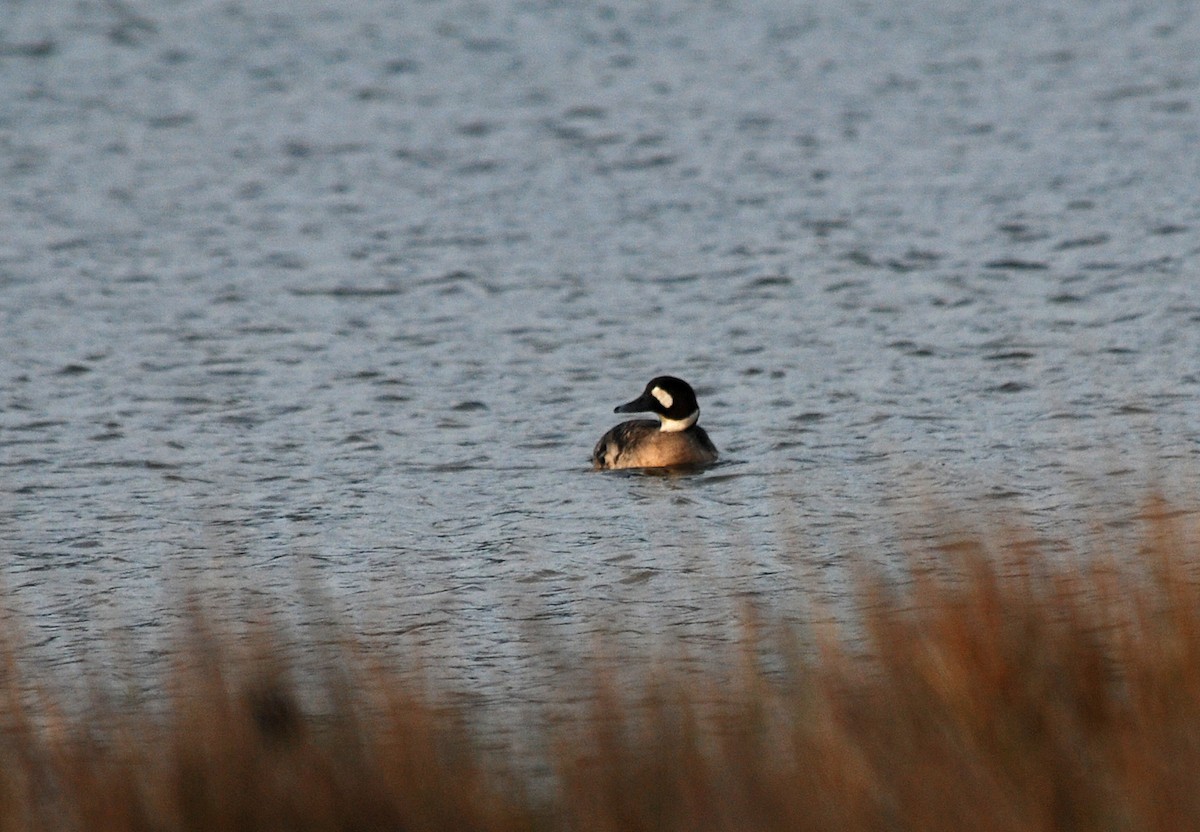Bronze-winged Duck
A species of Bronze-winged Duck Scientific name : Speculanas specularis Genus : Bronze-winged Duck
Bronze-winged Duck, A species of Bronze-winged Duck
Botanical name: Speculanas specularis
Genus: Bronze-winged Duck
Content
Description General Info
 Photo By Nigel Voaden
Photo By Nigel Voaden Description
The bronze-winged duck (Speculanas specularis) also known as the spectacled duck, is a dabbling duck and the sole member of its genus Speculanas. It is often placed in Anas with most other dabbling ducks, but its closest relative is either the crested duck or the Brazilian duck, which likewise form monotypic genera. Together they belong to a South American lineage which diverged early from the other dabbling ducks and may include the steamer ducks. Named after the "bronze" speculum this species is also known as "pato perro" or "dog-duck" after the harsh barking call of the female. The bronze-winged duck lives among forested rivers and fast-flowing streams on the lower slopes of the South American Andes, in central and southern Chile and adjacent parts of Argentina. The sexes are alike. As noted by Johnsgard (2010): "Most observers agree that heavily forested rivers that are relatively swift-flowing are the preferred habitat of this species, although they also occur on slow-moving rivers and on pools or ponds of the adjoining forest areas. They are said to consume both vegetable and animal materials, and have been observed eating small snails that abound on stony shingle beaches. Stomach remains from two birds that were examined contained the seeds of water crowfoot (Batrachium), water milfoil (Myriophyllum), and a bulrush, leaves of water crowfoot, foliage and seeds of a pondweed, and caddis fly larvae as well as a few other aquatic insect remains (Phillips, 1922–26). In captivity at least the birds seem to spend a good deal of time on land and have not been observed diving for food." 
Size
54 cm
Nest Placement
Cavity
Feeding Habits
Bronze-winged Duck consumes a varied diet, including aquatic plant parts like seeds and stems, and aquatic invertebrates such as insects. Typically feeding in pairs or small groups, bronze-winged Duck forages by wading, probing at water's edge, grazing on land, or upending in shallow water.
Habitat
The bronze-winged Duck typically inhabits riverine environments in forested areas, favoring swift-flowing rivers and the adjacent wetlands. Its preferred habitats include a blend of water bodies such as placid lakes and marshlands, primarily found in temperate regions with substantial woodland coverage.
Dite type
Herbivorous
General Info
Feeding Habits
Bird food type

 Photo By Nigel Voaden
Photo By Nigel Voaden Scientific Classification
Phylum
Chordates Class
Birds Order
Waterfowl Family
Geese Genus
Bronze-winged Duck Species
Bronze-winged Duck